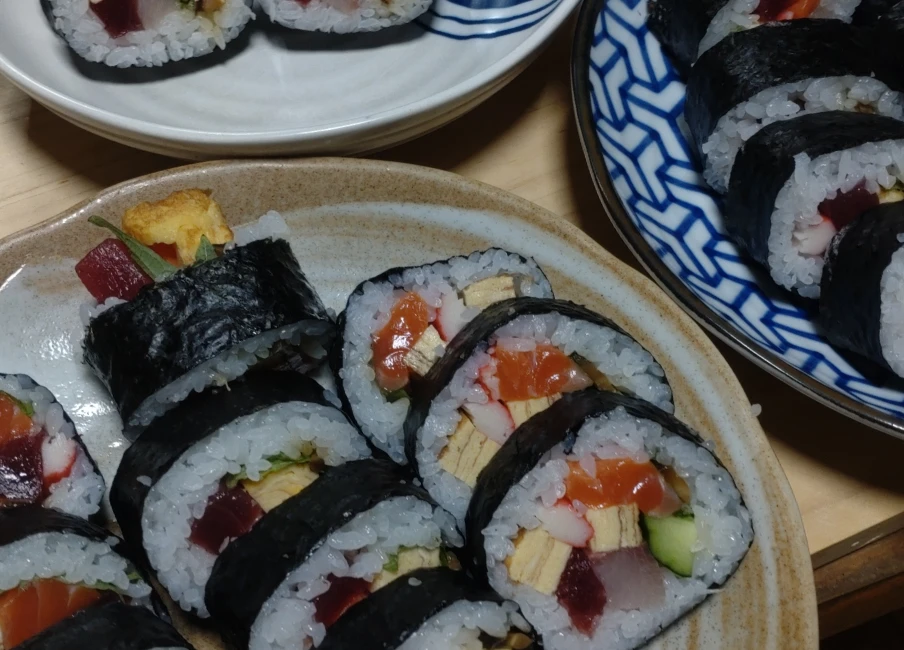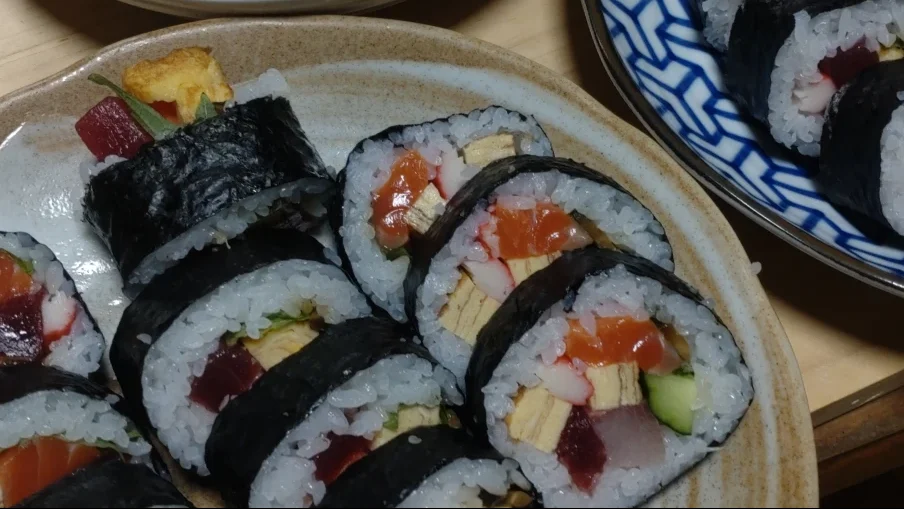
Since Mom’s been dealing with dementia, I’ve had a lot of chances to experience old-fashioned home cooking. You know, the kind of stuff you don’t see much anymore.
We’re talking ohagi (sweet rice balls), inari sushi, tekka maki (tuna rolls), and at New Year’s, mochi (rice cakes) and kombu maki (kelp rolls). And get this, I even fixed up an old kneading bowl and started making Japanese soba noodles from scratch!
So, this year for Setsubun (the day before the start of spring), I decided to try my hand at making eho-maki (lucky direction sushi rolls).
Eho-maki, huh?
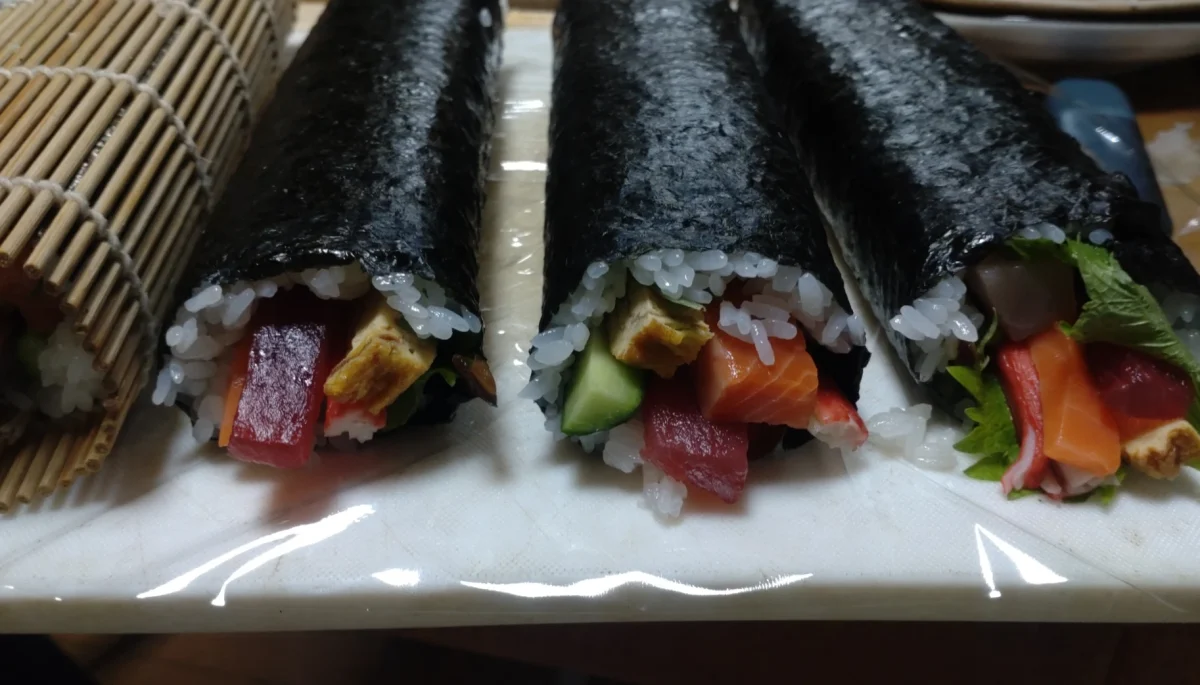
Eho-maki are these uncut thick sushi rolls you’re supposed to eat while facing the lucky direction on Setsubun. They’re kind of a good luck charm.
The Ingredients
They say you’re supposed to use seven ingredients in a thick sushi roll. That number’s supposed to represent the Seven Lucky Gods, for good business and health. It’s like you’re rolling up all that good fortune. Another theory says the thick roll looks like an oni’s (demon’s) iron club that they left behind when they ran away, so it’s like you’re doing some demon-slaying. The ingredients aren’t set in stone, but you usually see stuff like this:
Source: Excerpt from Wikipedia
- Koya-dofu (freeze-dried tofu)
- Kanpyo (dried gourd strips)
- Cucumber (or lettuce, or daikon sprouts)
- Date-maki (sweet rolled omelet)
- Eel (or conger eel)
- Sakura denbu (sweet pink fish flakes)
- Shiitake mushrooms (cooked)
Growing up, if we had sushi at home, it was always inari sushi or rolled sushi. Like, kappa maki (cucumber rolls), tekka maki, and kanpyo maki, but with way too much rice – nothing like what you’d get at a sushi restaurant.
We did make thick rolls, but they didn’t have as many ingredients as eho-maki. And honestly, I didn’t even know what eho-maki were until like, ten years ago.
Anyway, my son and I were staying at Mom and Dad’s place, and since it was Setsubun, I figured, why not try making some eho-maki?
Eho-maki, AKA Fancy Seafood Rolls
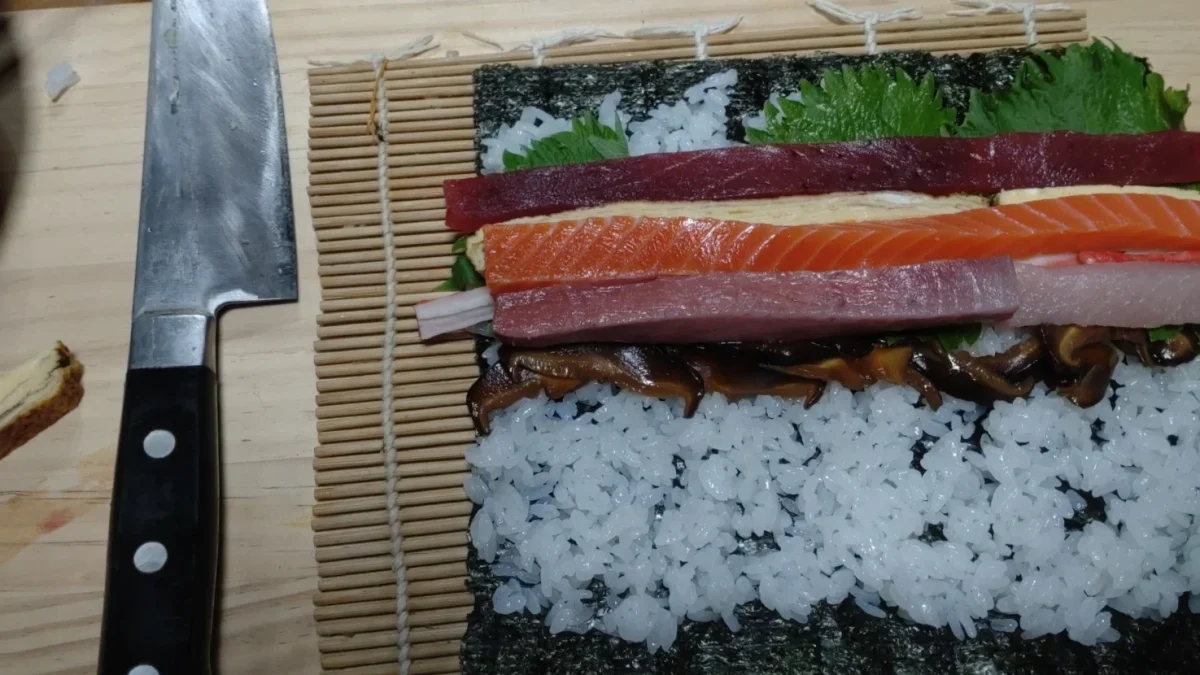
Dad was footing the bill, so I splurged a little and got three kinds of sashimi for the filling.
We already had eggs and shiitake mushrooms at home, so I made a regular omelet instead of date-maki, and used the cooked shiitake instead of kanpyo. And that was all the filling done.
I made the sushi rice with some slightly better rice vinegar than usual, and used some slightly better nori (seaweed sheets) for the rolls.
You mix the sushi vinegar (sugar and a bit of salt) into the freshly cooked rice by cutting it in, not mashing it.
Once you’ve spread the rice on the nori, you lay out the ingredients, and brush a little sushi vinegar on the top edge of the nori so it sticks when you roll it up.
Then you just roll it up, and you’re done! Easy peasy!
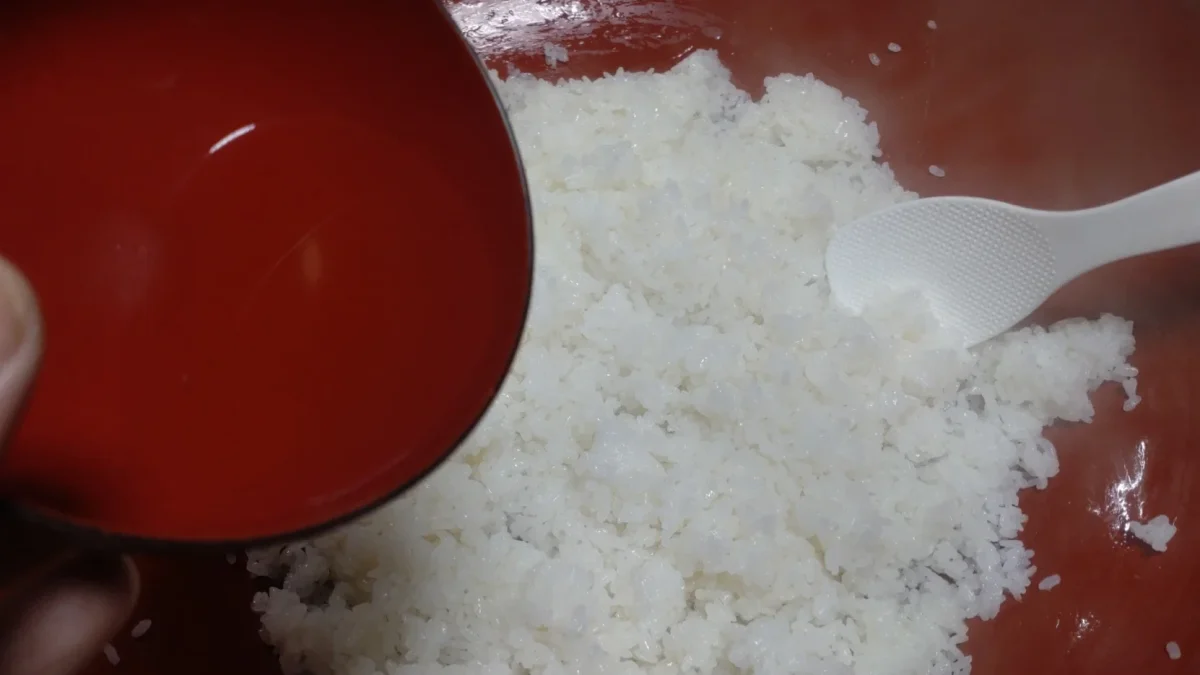
I know you’re not supposed to cut eho-maki, but Mom and Dad could choke, so I sliced it up like normal.
It takes a bit of time to prep all the ingredients, but making the eho-maki was way easier than I thought.
I’m thinking I might try making something else next time.
The end.
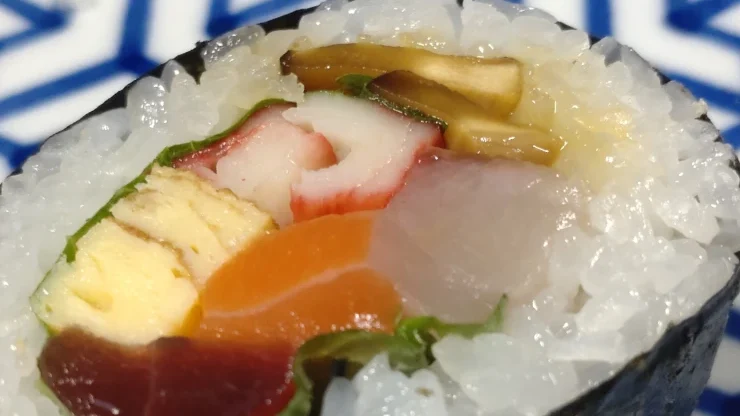
Additional information:
- Setsubun: This is a Japanese holiday that marks the day before the beginning of spring in the old calendar. It’s celebrated with various traditions, including eating eho-maki and throwing roasted soybeans to ward off evil spirits.
- Eho-maki (恵方巻): These are thick, uncut sushi rolls eaten on Setsubun while facing the “lucky direction” (eho) of that year. It’s believed to bring good fortune.
- Sushi Rice: Specially prepared rice with vinegar, sugar, and salt, used for making sushi.

